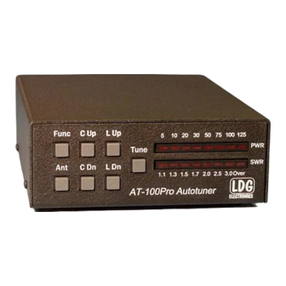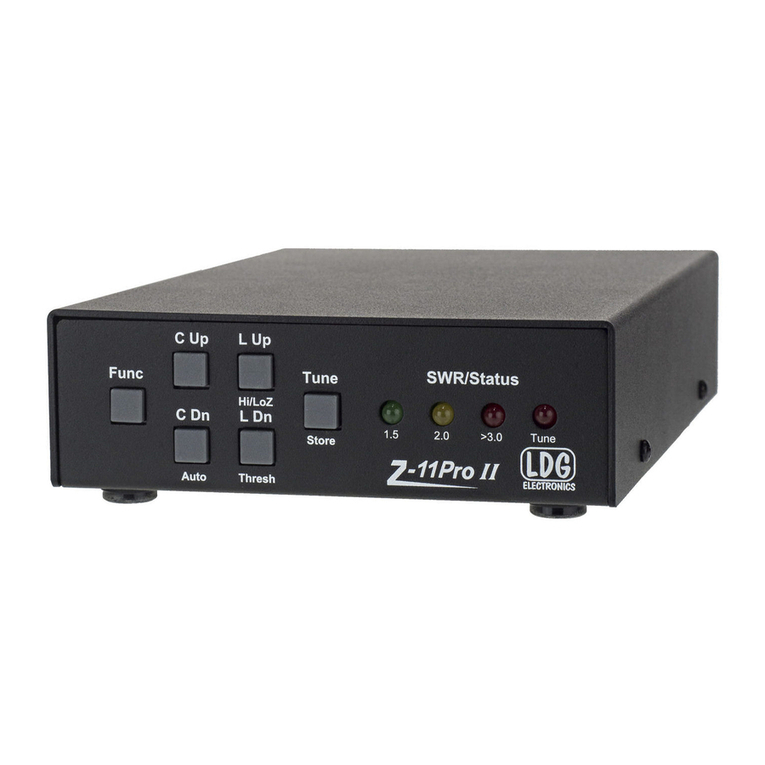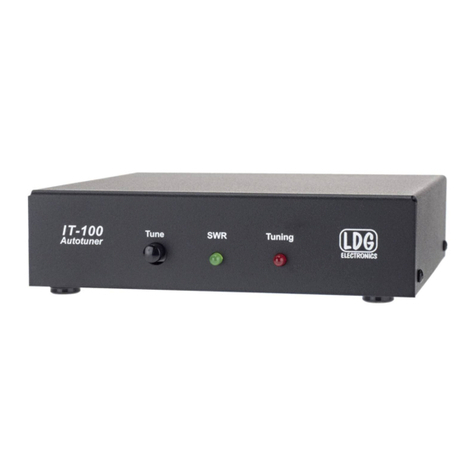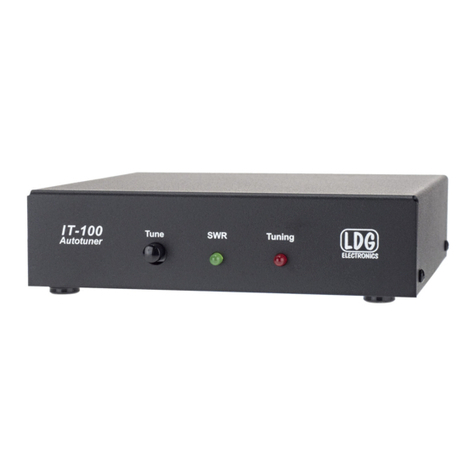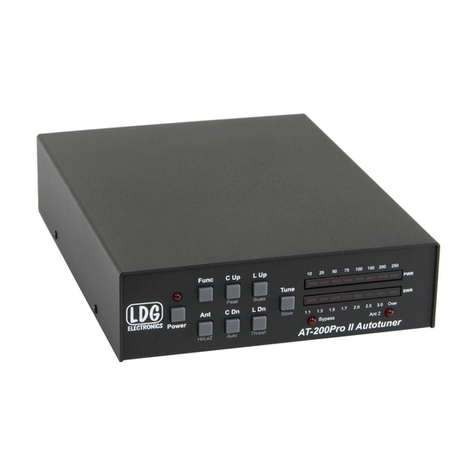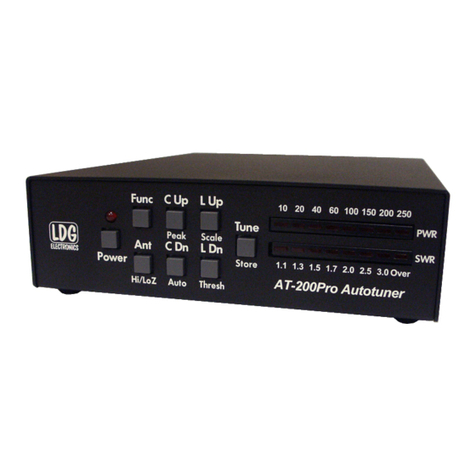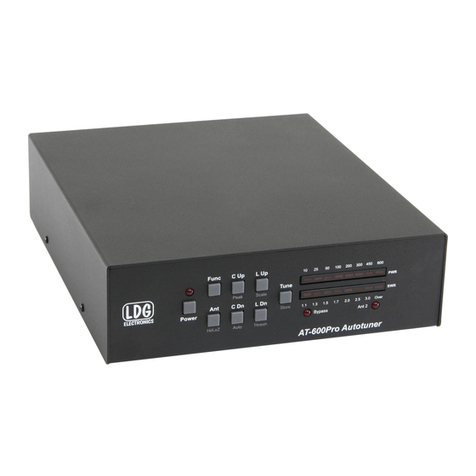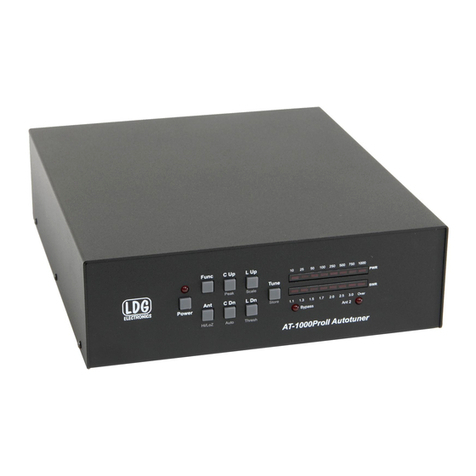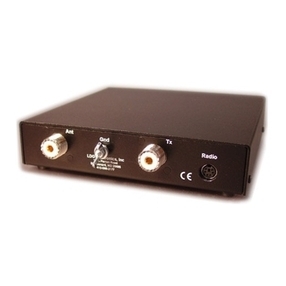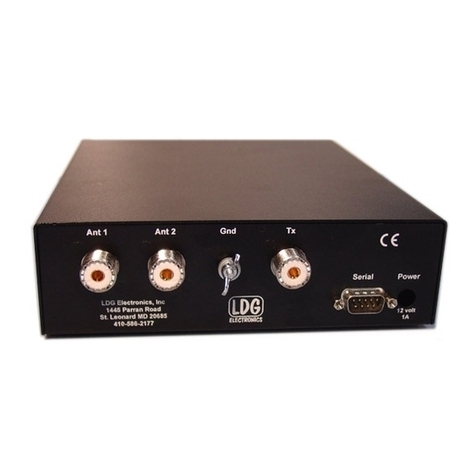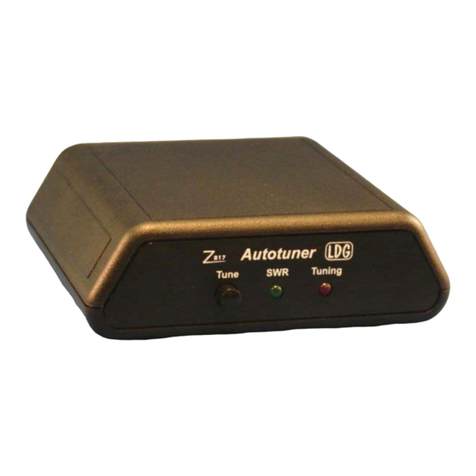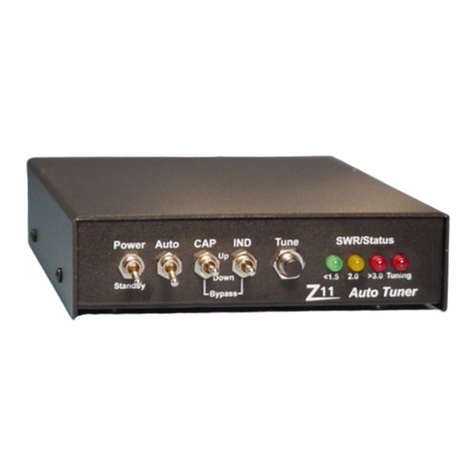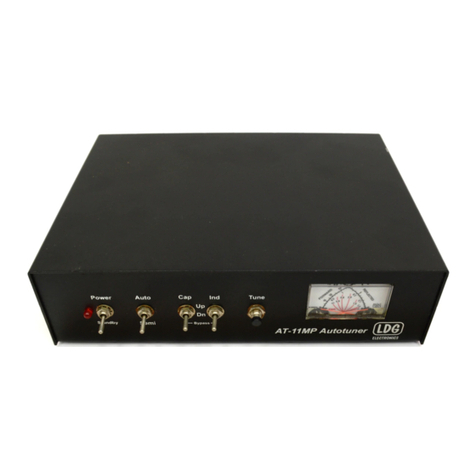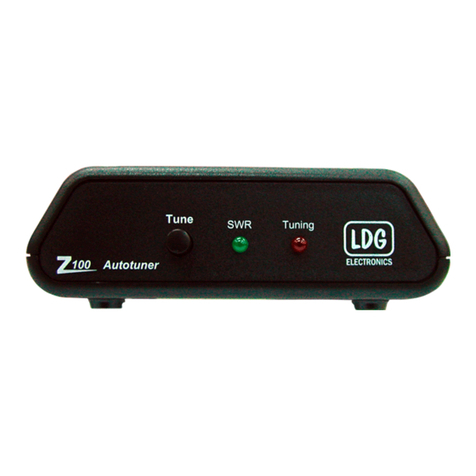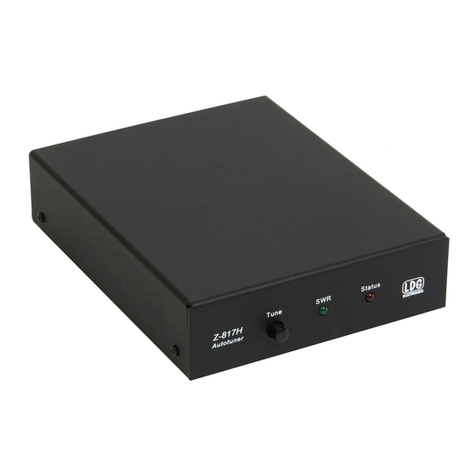
PAGE 3
INTRODUCTION
LDG pioneered the automatic, wide-range switched-L tuner in 1995. From its laboratories in
St. Leonard, Maryland, LDG continues to define the state of the art in this field with innovative
automatic tuners and related products for every amateur need.
Congratulations on selecting the YT-450 100-watt automatic tuner for the Yaesu FT-450 and
FT-950 transceivers. The YT-450 provides semi-automatic antenna tuning across the entire HF
spectrum plus 6 meters, at power levels up to 125 watts. It will tune dipoles, verticals, Yagis, or
virtually any coax-fed antenna. It will match an amazing range of antennas and impedances, far
greater than some other tuners you may have considered, including the built-in tuners on many
radios.
The YT-450 is similar to previous LDG tuners, but is specially engineered to integrate with
your Yaesu FT-450 or FT-950 HF radio. The YT-450 connects to the CAT (Computer
Automated Transceiver) port on the back of the radio. The CAT interface allows an external
device such as a PC or the YT-450 to control the FT-450/950 by sending it serial commands. The
YT-450 takes advantage of this interface to simplify the tuning process -- one button push is all
that is needed in order to switch the radio to AM mode, reduce output power, transmit a carrier,
measure the transmit frequency, and then restore the radio to its previous mode and power level!
Additionally, the YT-450 also draws power directly from the radio, so no extra cable is needed.
JUMPSTART, OR “REAL HAMS DON’T READ MANUALS!”
Ok, but at least read this one section before operating the YT-450:
Turn off power to your FT-450/950 radio.
Connect the antenna jack on the transceiver to the “TX” jack on the YT-450, using a 50 ohm
coax cable jumper.
Connect the 50 ohm coax antenna feedline to the “ANT” jack on the YT-450.
Connect the 8-pin mini-DIN plug on the supplied radio interface cable to the “TUNER” port on
the back of your FT-450/950. The YT-450 draws 12V power from the radio via this jack.
Connect the DB-9 plug on that same end of the radio interface cable to the “CAT” port on the
back of your FT-450/950.
Connect the DC coax plug on the other end of the radio interface cable to the “Power” jack on
the rear of the YT-450.
Connect the remaining DB-9 plug to the DB-9 jack marked “Radio” on the rear of the YT-450.
Using the radio’s menu system, set the CAT RATE to 38,400 baud, set the CAT TOT to 100,
and set CAT RTS to “Enable”†.
Select the desired operating frequency and mode.
Push and hold the TUNE button on the front of the YT-450 for one second (until the Tuning
LED comes on), then release. The transceiver automatically switches to AM mode, and keys up
† Be sure you have also set up the AM Carrier level to 25 watts, as per your FT-950 instruction manual, if using an FT-950 radio.







